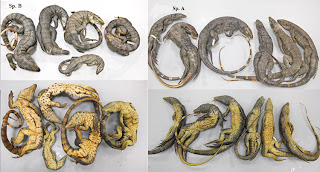neotropicalherps
New Member
- Messages
- 14
- Location
- Chicago area
Good morning,
I am interested in sorting out the species known as Tupinambis teguixin - sometimes called the golden tegu, sometimes called the black and white tegu. Has anyone bred these lizards? If so I would be very interesting in seeing photos of hatchlings and the parents. Does anyone have photos of these lizards taken in the wild with locality data? Again, I am interested in seeing the photos and discussing the habitat and behavior.
I am interested in sorting out the species known as Tupinambis teguixin - sometimes called the golden tegu, sometimes called the black and white tegu. Has anyone bred these lizards? If so I would be very interesting in seeing photos of hatchlings and the parents. Does anyone have photos of these lizards taken in the wild with locality data? Again, I am interested in seeing the photos and discussing the habitat and behavior.

